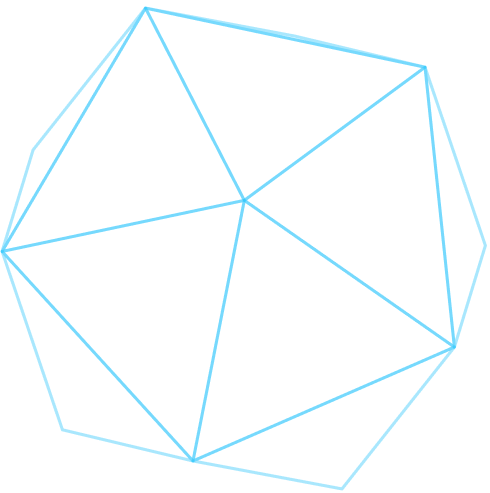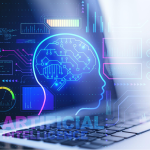
Marketing automation has come a long way. What started as a simple email scheduling tool has now evolved into a smart, multi-channel ecosystem that organizes customers through a customized journey.
Today, as we enter 2025, automation is not merely a question of time-saving or automating mundane tasks. It is the driving force behind contemporary marketing strategy. This is a critical year for customer expectations. Technological innovation and data privacy regulations are converging, and companies that understand this will benefit. Not only remain competitive, but will also excel by embracing the future trends in marketing automation.
Let’s dive into the big marketing automation trends of 2025 and what marketers can expect.
Anchor: Contact KoderHive’s expert automation team today to build powerful, data-driven marketing systems that save time, increase conversions, and strengthen customer loyalty.
AI-Driven Personalization at Scale
Personalization used to be about adding a customer’s first name to an email. Not in 2025. Artificial intelligence is making the delivery of experiences so personalized that customers feel like each message was actually written for them.
Smarter customer journeys are being charted using AI platforms that study browsing behaviour, purchase histories, and engagement signals in real time. Rather than one-size-fits-all campaigns, companies can now send hyper-personalized messages that seem timely and relevant.
The game changer is personalization at scale. A small company with a few employees can now compete with large companies by making tough decisions with AI while marketers focus on strategy and creativity.
Voice and Conversational Marketing
Communication is Shifting:
People now use voice search and conversational interfaces, not just clicks and typing.
Chatbots are Evolving:
They act like digital assistants that feel human.
AI-powered Bots:
Can answer questions, suggest products, and guide customers through checkout with natural conversations.
Customers Expect:
Quick, accurate, and empathetic responses, which intelligent bots deliver.
Voice Search is Growing:
Smart speakers and voice assistants make voice-optimised campaigns essential.
Hands-Free Search Era:
Businesses must adapt so their brand stays visible in voice-driven interactions.
Predictive Analytics and Data-Driven Decisions
Guesswork is going to the past. Predictive analytics is the way forward. Through analysing patterns in customer behavior, brands can predict what’s going to happen before it occurs.
This translates to smarter lead scoring knowing which leads are most likely to convert and automatically putting them first. Segmentation too becomes more acute, segmenting customers not only by demographic but also by intent forecast.
Marketing teams can now make data-driven decisions instead of relying on gut feelings. Campaigns become proactive rather than reactive, enabling companies to be one step ahead.
Omnichannel Automation
Customers do not remain loyal to a single platform. They transition across email, social media, SMS, and websites easily. Which is why omnichannel automation isn’t a choice anymore, it’s mandatory.
Businesses in 2025 are creating consolidated campaigns across email, SMS, social, and web that mutually support one another as a single conversation. Let’s say a customer views an ad for a product on Instagram, gets a personalised follow-up email message, and receives a text notification about a sale all automated behind the scenes.
The objective is to provide a seamless customer experience. When every channel gets into sync, customers experience the brand as knowing them everywhere and not only in discrete points of contact.
Privacy-First Marketing
Automation feeds on data, but power comes with responsibility. Privacy laws are tightening globally, and customers are becoming increasingly paranoid about the way their data is utilised.
Compliance is not optional in 2025. Marketing automation tools have to develop features that honour regulations such as GDPR and other future rules. But compliance aside, brands must prioritise developing trust through openness.
Being open about how data is gathered and allowing customers to have control over preferences can actually make loyalty grow stronger. Privacy-first marketing isn’t about keeping away from fines, it’s about demonstrating that your brand honours its audience.
Integration with Customer Support and Sales
Marketing doesn’t stop when a lead clicks “buy”. Automation in 2025 will erase the distinctions between marketing, sales, and customer support.
Closing the marketing-to-sales gap involves data and insights shared easily among teams. Sales representatives can view precisely what content prospects interacted with, while marketing can track which campaigns deliver revenue.
Once purchased, automated customer nurturing sustains the relationship. From onboarding sequences to support bots, customers are walked through guidance that appears seamless, not piecemeal. This unified treatment makes the overall customer journey, from first touch to repeat buy, feel cohesive.
Low-Code and No-Code Automation Tools
Not all marketers are tech-savvy, and that’s just fine. The emergence of low-code and no-code platforms in 2025 is levelling the playing field for marketing technology.
These tools enable marketers to create automated workflows, campaign designs, and platform connections with drag-and-drop ease. No IT ticket required. The payoff? Quicker launches for campaigns and increased experimentation without the technical dependency bottleneck.
This shift enables creative teams to work on ideas instead of waiting on developers, rendering marketing more nimble than ever.
The Rise of Predictive Content Creation
Automation isn’t merely sending messages, it’s also about making them. Tools powered by AI now recommend blog posts, compose ad copy, and even produce visuals.
Predictive content creation will assist marketers in creating assets that align with customer intent before they search for it in 2025. Think of an AI tool that recognises your audience will soon care about a new trend and assists you in publishing content ahead of others.
Of course, automation should not replace human creativity. The best results come from balancing AI’s efficiency with human empathy, storytelling, and brand voice.
Final Words
Marketing automation in 2025 is smarter, more conversational, and more connected than ever. From AI-powered personalization and predictive analytics to privacy-first practices and low-code platforms, the tools available today are reshaping how businesses engage with customers.
The secret for marketers is to get ready now. Leverage technology, but don’t forget the human touch. Invest in building trust, crafting genuine experiences, and applying automation to amplify, not diminish, the relationship between brand and customer.
At KoderHive, we create innovative marketing automation solutions that make your campaigns efficient, data-driven, and customer-focused. Those who get this balance right won’t just meet the needs of 2025 but will actually set marketing up for future success.








